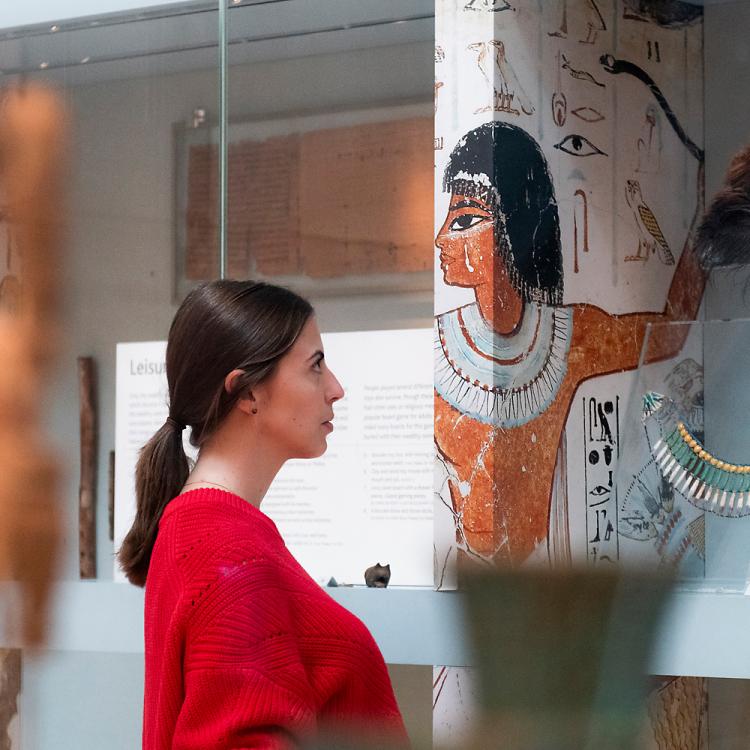Visiting the gallery
Opening times
Daily: 10.00–17.00 (Fridays: 20.30)
See full opening hours
Advance booking advised
Gallery audio guides
Listen on the Audio app, available on the App Store and Google Play.
This gallery is home to some of the most famous works of art from ancient Egypt: the tomb chapel of Nebamun.
Dating back to about 1350 BC, these are wall paintings from the tomb chapel of a wealthy Egyptian official called Nebamun. Following a 10-year period of conservation and research, the paintings are now on display together. They give the impression of what would have been experienced by the ancient visitors to the tomb chapel from the west bank of the Nile, Luxor, formerly Thebes.
The wall paintings from Nebamun's tomb chapel show an idealised vision of daily ancient Egyptian life. The objects on display here, which are more or less from the same time period, hint at the actual experience of living in Egypt for both the rich and poor.
Take a virtual tour
Take a closer look at the display cases in Room 61 to see everyday objects relating to fashion, beauty, leisure and work, then compare them to what you see on the wall paintings from Nebamun's tomb chapel.
Gallery facts
- The wall paintings from Nebamun's tomb chapel show an idealised vision of daily ancient Egyptian life. The objects on display in Room 61, which are more or less from the same time period, hint at the actual experience of living in Egypt for both the rich and poor.
- Many of the objects in this gallery belonged to the wealthy and survived only because they were buried in tombs. They provide a glimpse of these people's lavish lifestyles.
- Much less is known about the lives of most of society. The study of human remains in poor cemeteries is often the only way of learning about the short lives of most ancient Egyptians.
- Nebamun's tomb chapel was a place for people to come and commemorate Nebamun and his wife after his death with prayers and offerings. Nebamun himself was buried somewhere beneath the floor of the innermost room of the tomb chapel in a hidden burial chamber.
- The beautiful paintings, which decorated the wall, not only showed how Nebamun wanted his life to be remembered but what he wanted his life to be in the afterlife.
- Building a tomb chapel was expensive and would have only been done by the wealthy. Most ancient Egyptians would have been buried in simple graves.
The story of Nebamun's tomb chapel
Ancient Egyptian life
The wall paintings from Nebamun's tomb chapel show an idealised vision of daily ancient Egyptian life. The objects on display in Room 61, which are from the same time period, hint at the actual experience of living in Egypt for both the rich and poor.
Many of the objects in this gallery belonged to the wealthy and survived only because they were buried in tombs. They provide a glimpse of these people's lavish lifestyles.
Much less is known about the lives of the majority of society. The study of human remains in poor cemeteries is often the only way of learning about the short lives of most ancient Egyptians.
blank
blank
Accessibility
- A large print guide is available.
- Some objects in this collection feature on the British Sign Language multimedia guide. This resource is temporarily unavailable. You can access a selection of BSL films on your own device.
- Some objects in this collection feature on the audio description guide, available on Soundcloud.
- Seating is available.
- Step-free access.
- View sensory map.
Visit Accessibility at the Museum for more information.











